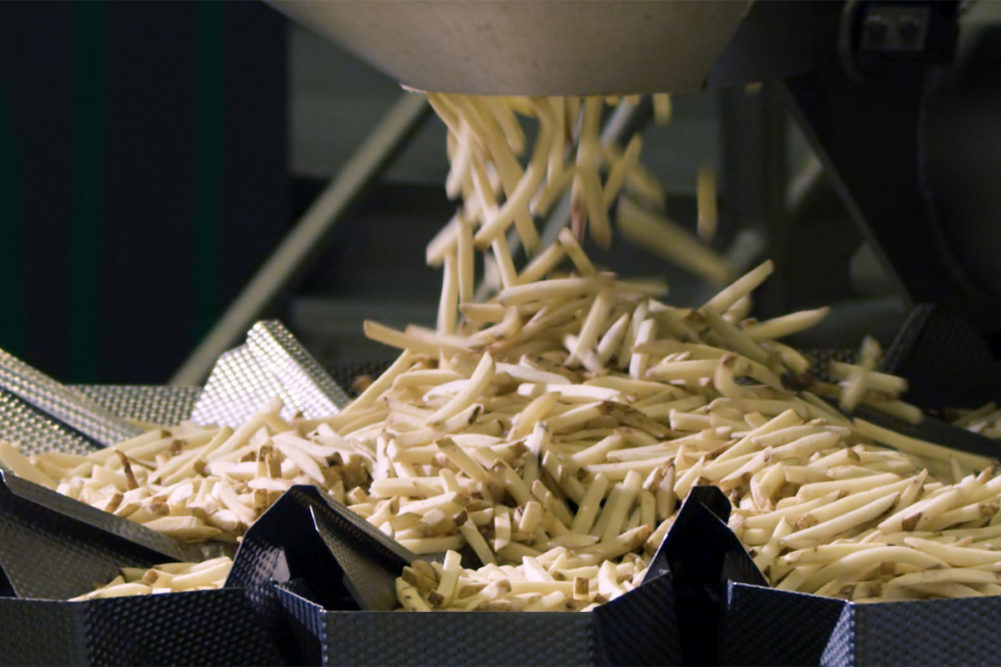EAGLE, IDAHO — Potato processor Lamb Weston Holdings, Inc., is seeing current restaurant trends like what occurred in the Great Recession of 2007 to 2009 — traffic at quick-service restaurants is holding while it is declining at casual dining and full-service restaurants as consumers choose less expensive options when dining away from home.
“Overall, we expect volatility in restaurant traffic and demand trends will continue through fiscal 2023,” said Thomas P. Werner, president and chief executive officer, during an Oct. 5 conference call to discuss fiscal 2023 first-quarter results. “But history has shown that this category is resilient during economic downturns. Although we may see some category weakness in the near term, we remain confident in the long-term growth prospects of the category in the US and in our key international markets.
“In addition, as category growth returns to historical rates, we should be well positioned to capture at least our share of growth with our investments in new processing capacity in Idaho and China as well as our newly announced expansion in Argentina.”
Bernadette M. Madarieta, chief financial officer, added that the market volatility is making forecasting sales volumes more difficult.
“As we saw in the first quarter, we believe that consumer behavior during inflationary or recessionary times will continue to affect overall demand as well as our sales channel and product mix, with QSRs and retail outlets benefiting at the expense of casual dining and full-service restaurants,” she said. “In addition, we expect our sales volumes will be affected by near-term production and throughput constraints as we continue to face disruptions and availability of key product inputs and spare parts.”
Despite the challenges, Lamb Weston Holdings had a strong quarter. Net income for the quarter ended Aug. 28 was $232 million, equal to $1.61 per share on the common stock, and an improvement over the first quarter of fiscal 2022 when the company earned $30 million, or 20¢ per share.
Quarterly sales rose to $1.1 billion from $984 million the year prior.
The company benefited from the raising of prices at the end of fiscal 2022 and during the quarter and expects to receive additional benefits from an improved potato crop when compared to last year’s crop.
“With respect to pricing, our overall price/mix growth accelerated for the fourth consecutive quarter,” Mr. Werner said. “In our Foodservice and Retail segments, we continue to realize a carryover benefit of multiple product pricing actions that we have taken over the past 15 months and expect the benefit of these actions will continue to gradually build through the first half of fiscal 2023.”
Lamb Weston’s Global segment, which is comprised of the top 100 North American QSR and full-service restaurant chains as well as international sales, had sales of $560 million, up from $501 million the year before. The benefit of domestic and international product and freight pricing actions to offset inflation, as well as favorable mix, drove a 14% increase in price/mix, according to the company. The timing of shipments to large QSR chain customers in the United States, including the effect of lapping a notable limited time product offering in the prior-year quarter, largely drove the 2% decline in volume.
Foodservice segment sales, which are to restaurant chains outside the North America top 100 and foodservice distributors, rose 14% to $366.3 million. Raised prices buoyed the segment while demand in the segment’s restaurant and non-commercial channels softened along with restaurant traffic as inflation pressured consumer discretionary spending, the company said.
Retail segment sales rose 28% to $170 million. Business unit price/mix was up 32% during the quarter while volume was down 4%. The lower volume was due to incremental losses of certain lower-margin private label products, according to the company.
Mr. Werner said this year’s potato crop will be near the lower end of historical averages.
“Specifically, the overall quality of the crop, including shape, color, level of defects and solid content is good and consistent with historical averages,” he said. “Yields, however, are below average. The unusually hot weather during August affected the growth of the potatoes and resulted in a greater-than-average proportion of potatoes failing to bulk up to the desired size.”
In response, the company has begun to purchase potatoes from outside its supply network, primarily from growers in the Columbia Basin in Idaho. In fiscal 2022, the poor quality of the potato crop forced the company to buy and transport potatoes from as far away as the East Coast.





